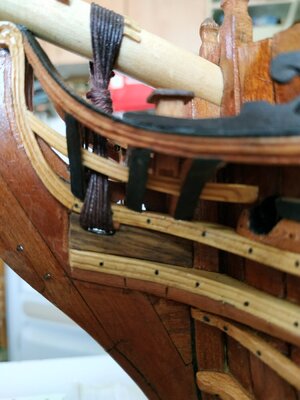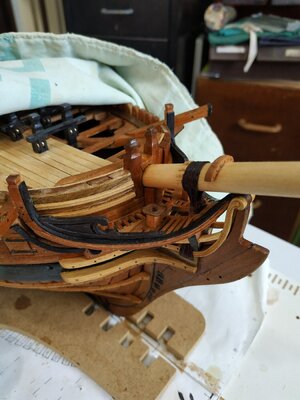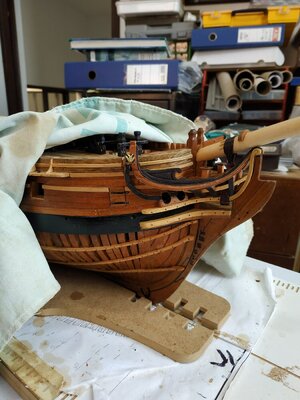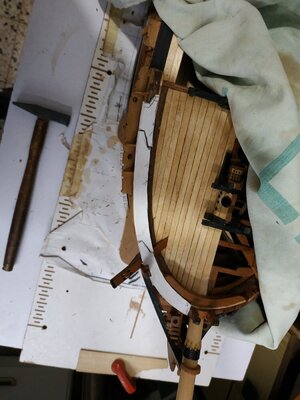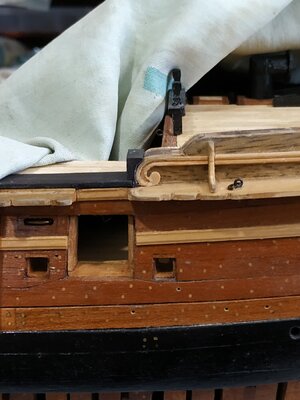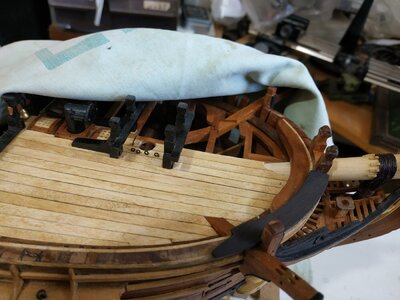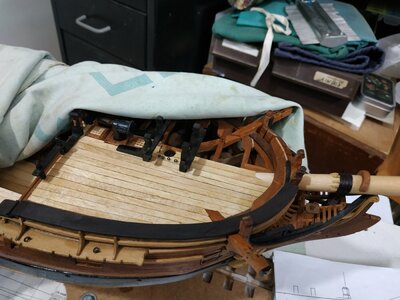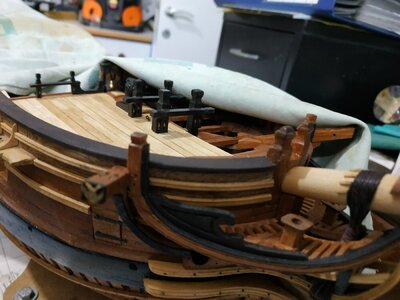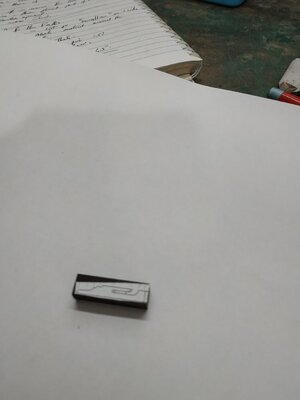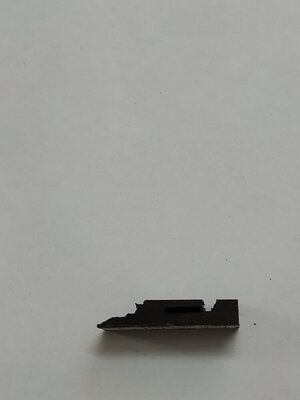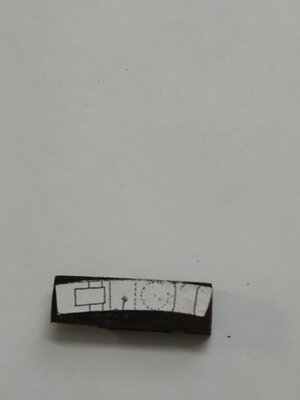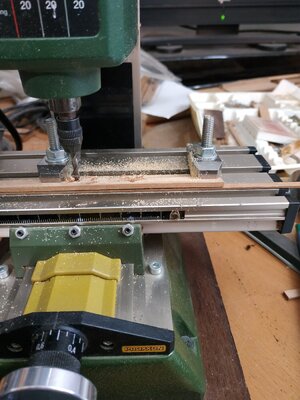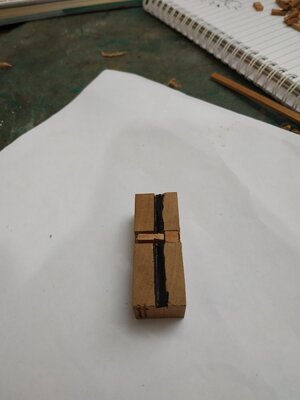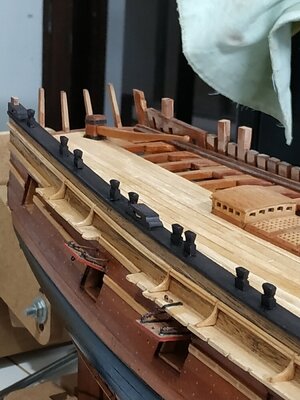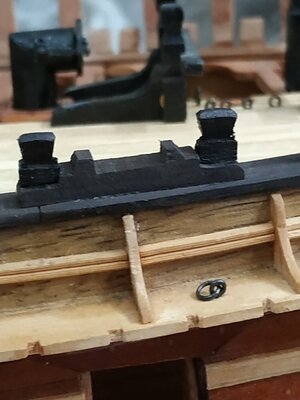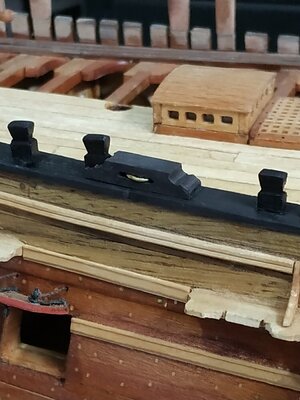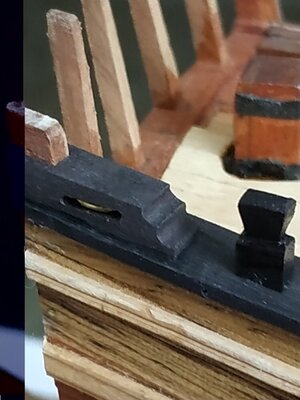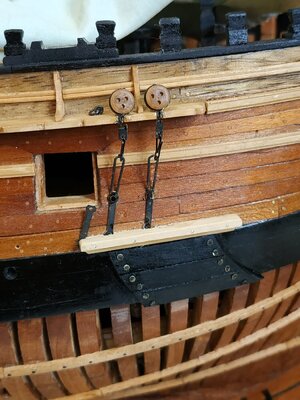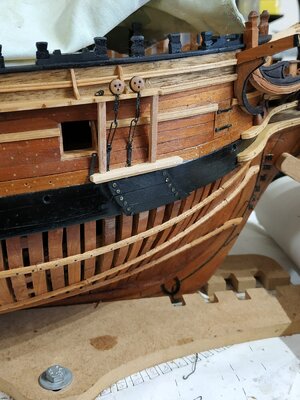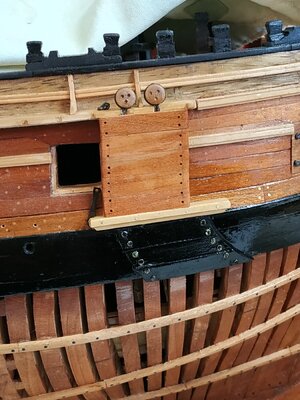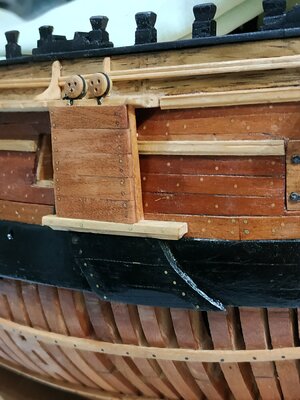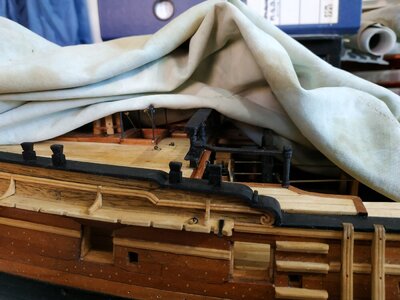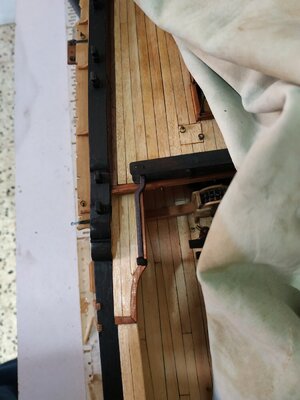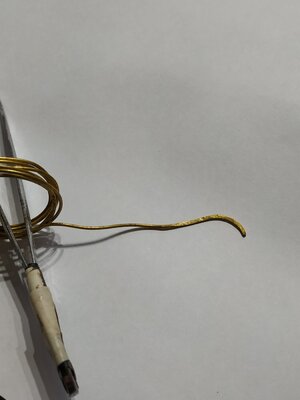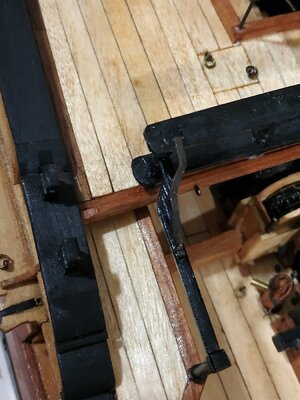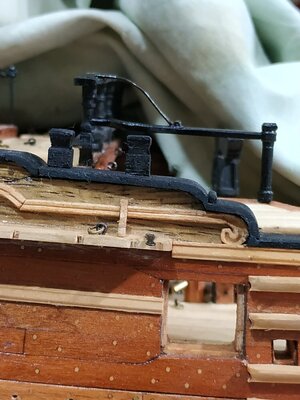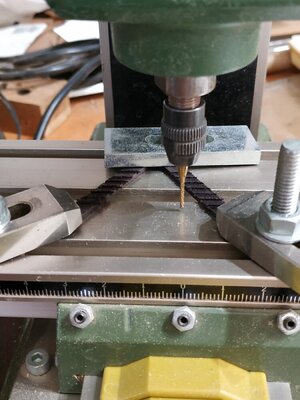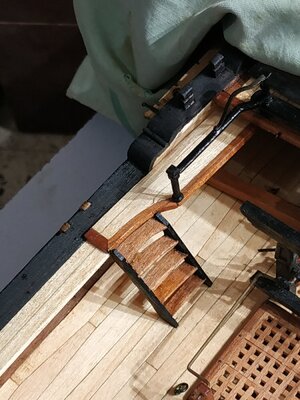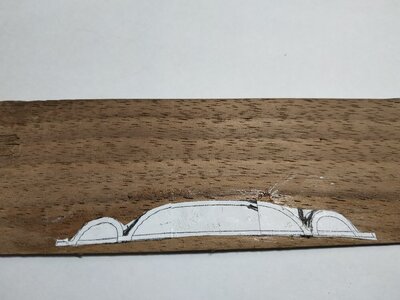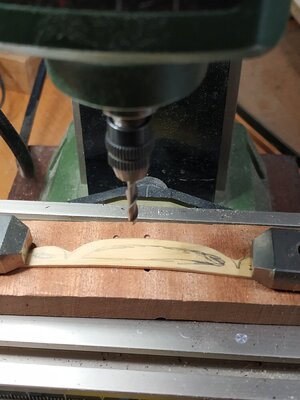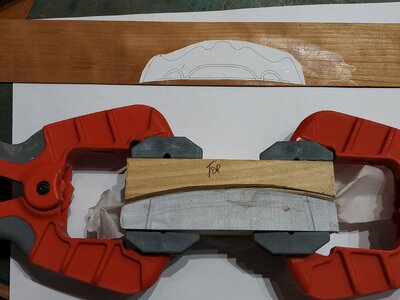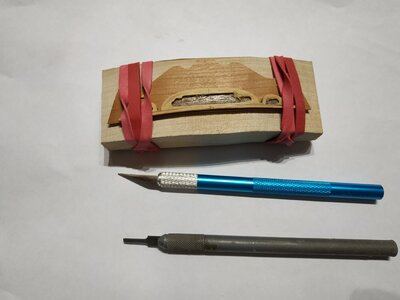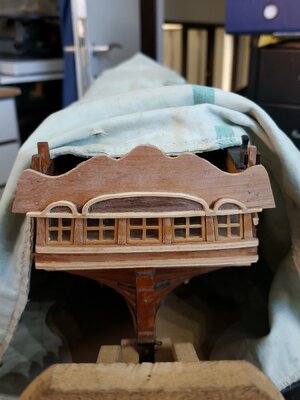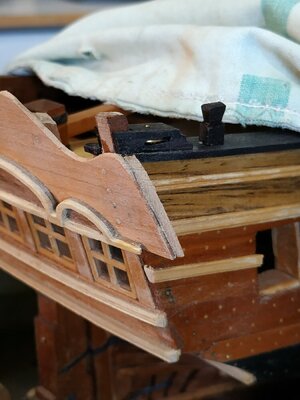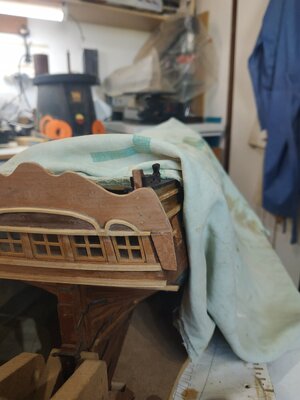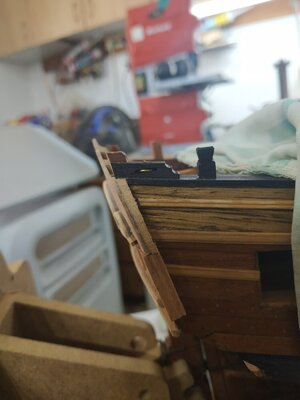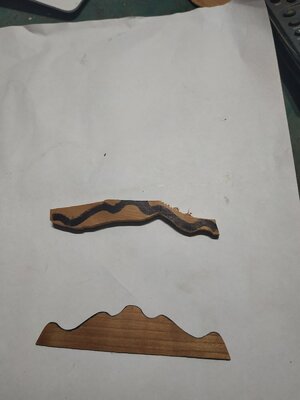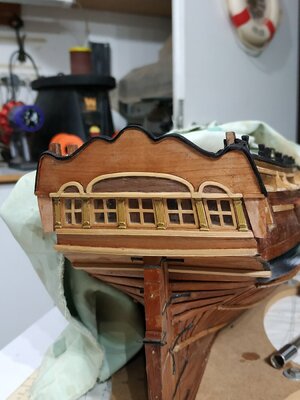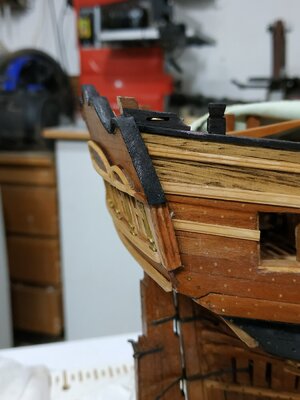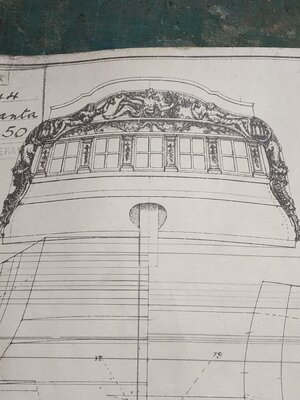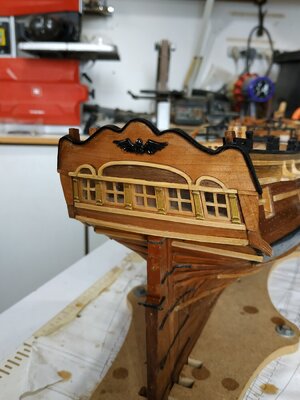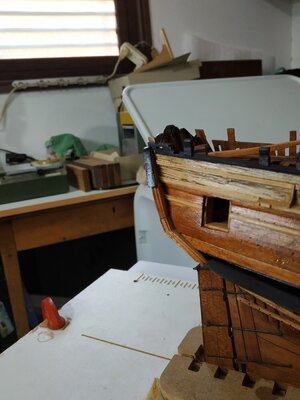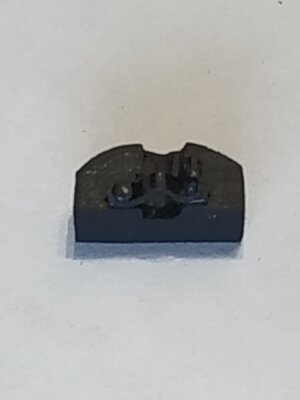The Eking Rail
The continuation of the Cathead Support.
In my plan,Atalanta, this extends above the center of the Hawse Bolster. (there is no 1st Head Timber)
The first job is to fay the inner surface. This is a significant curve. I remembered my pin jig that made it easier.
Again an oversize blank, 15x50x10mm.
With the Supporter held in place by tape,I then made the scarf joint, marked the lower curve, then the parallel upper edge. Finally the outer edge.
I epoxy-ed the joint for strength to allow the final shaping off the model.
The plan calls for molding the outer surface, but I was disappointed with my attempts on the cherrywood Main Rail,
The 3D and other illustrations show a coloured insert similar to the Covering Boards of the Head Timbers, so I followed suite

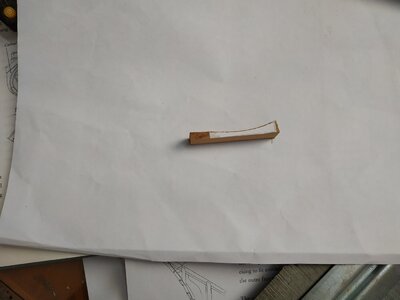
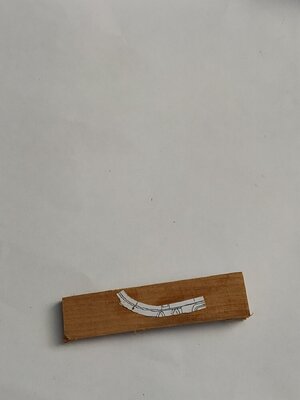
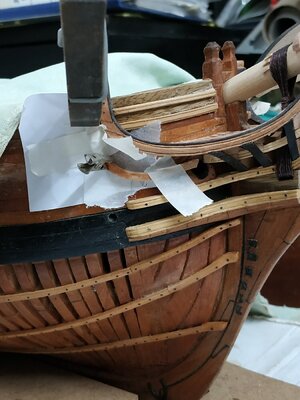
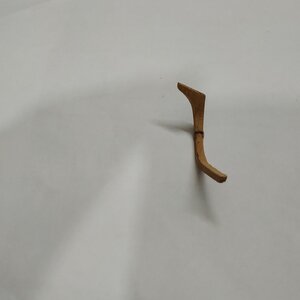
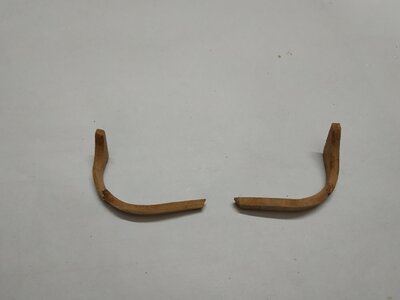
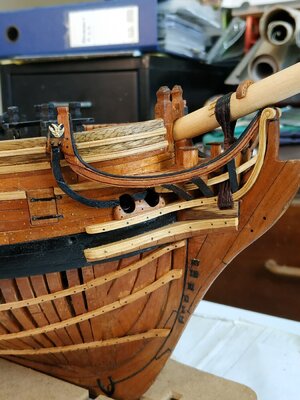
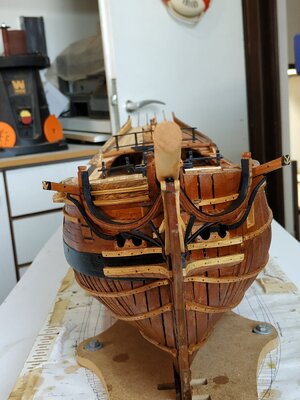
The continuation of the Cathead Support.
In my plan,Atalanta, this extends above the center of the Hawse Bolster. (there is no 1st Head Timber)
The first job is to fay the inner surface. This is a significant curve. I remembered my pin jig that made it easier.
Again an oversize blank, 15x50x10mm.
With the Supporter held in place by tape,I then made the scarf joint, marked the lower curve, then the parallel upper edge. Finally the outer edge.
I epoxy-ed the joint for strength to allow the final shaping off the model.
The plan calls for molding the outer surface, but I was disappointed with my attempts on the cherrywood Main Rail,
The 3D and other illustrations show a coloured insert similar to the Covering Boards of the Head Timbers, so I followed suite











